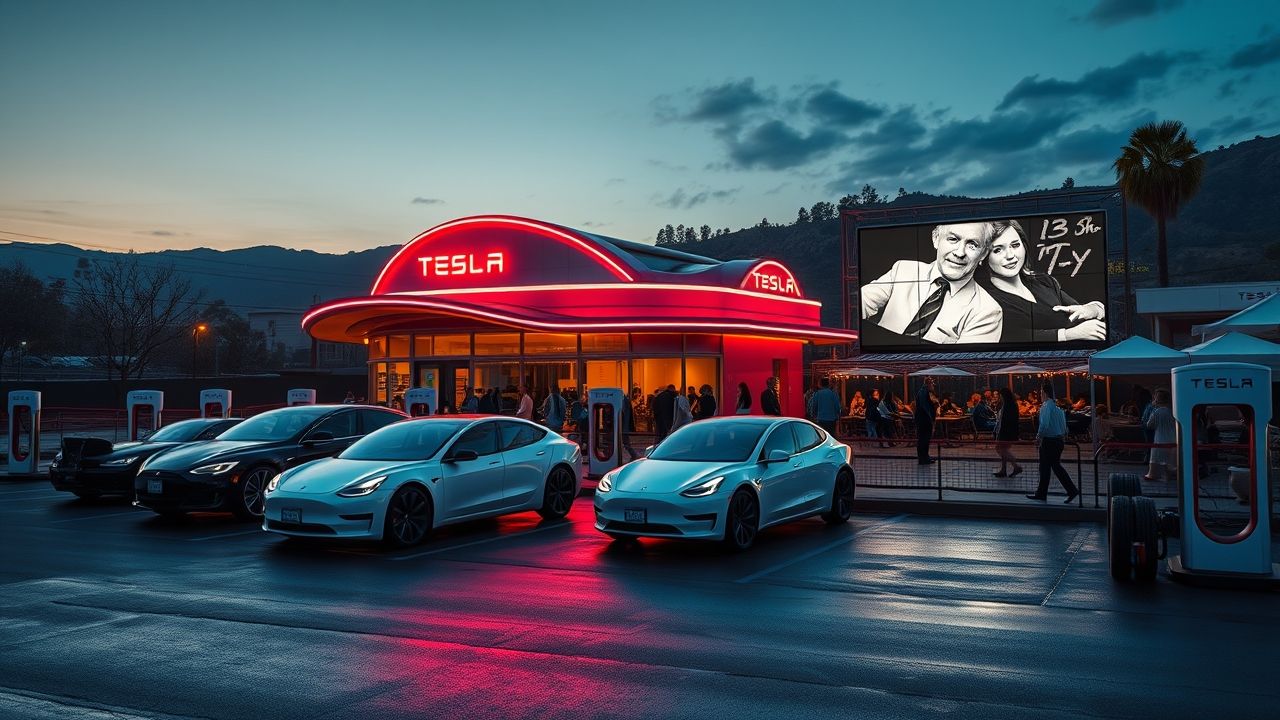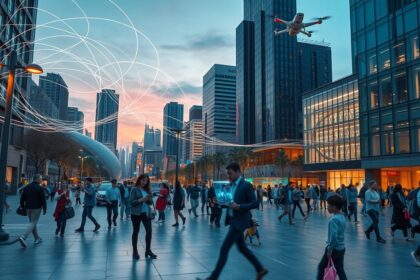The Tesla Diner Dream: Revolutionizing EV Travel
For electric vehicle owners, the allure of long road trips often collides with the practicalities of charging stops. While the Tesla Supercharger network has revolutionized convenience, envisioning a future where charging is not just a necessity but an experience, led to the exciting concept of the tesla diner. More than just a place to plug in, this innovative idea promises a blend of convenience, comfort, and culinary delights, transforming the very nature of EV road travel.
Key Summary
- Tesla’s Vision: To integrate charging with premium amenities like restaurants, lounges, and entertainment.
- Current Supercharger Network: Robust and widespread, but often lacks extensive on-site amenities.
- The Tesla Diner Concept: A proposed destination combining high-speed charging with a 24/7 diner, movie theater, and other comforts.
- Future Implications: Redefining the EV charging experience, fostering community, and potentially boosting local economies.
Why This Story Matters
The transition from internal combustion engines to electric vehicles is more than a technological shift; it’s a cultural and infrastructural evolution. For decades, gas stations served as ubiquitous hubs for fuel, snacks, and quick breaks. As the world electrifies, the equivalent “filling station” for EVs must adapt to different demands—specifically, the longer dwell times associated with charging. The idea of a tesla diner directly addresses this, proposing a model that makes charging a pleasant interlude rather than a mere pause. This fundamental shift affects everything from urban planning to highway services, influencing how we travel, where we spend our money, and even how communities along major routes might thrive in the electric future.
Main Developments & Context
The Evolution of the Tesla Charging Experience
Tesla has long been a pioneer in EV charging infrastructure. From the rollout of its initial Supercharger stations, designed for rapid energy top-ups, to the denser V3 Superchargers offering even quicker turnarounds, the company has consistently prioritized convenience. However, early Superchargers were often just strategically placed stalls, sometimes in parking lots or near existing businesses, offering little beyond the charging itself.
From Basic Superchargers to Destination Hubs
The vision has gradually expanded. Tesla recognized that a significant portion of charging time, especially for longer trips or larger battery packs, still involved a wait. This wait presented an opportunity. Why not make it productive, or at least enjoyable? This thinking paved the way for the concept of integrating more amenities directly into charging locations, transforming them into true “destination hubs.”
Elon Musk’s Vision for a Tesla Diner
The most tangible expression of this vision came from Elon Musk himself, who has frequently hinted at and even detailed plans for a tesla diner. The specific concept often cited is a retro-futuristic 1950s-style diner in Hollywood, complete with a drive-in movie theater. This proposed location would offer an immersive experience, allowing Tesla owners to charge their vehicles while enjoying a meal and entertainment. It represents a bold step beyond simple charging, aiming to create a memorable and enjoyable stop for travelers.
Amenities Beyond the Plug: What to Expect
The idea of a tesla diner extends beyond just food. The conceptual designs and public discussions point towards a holistic approach to traveler comfort and entertainment during charging sessions:
- Restaurants and Lounges: A full-service diner experience, offering meals, snacks, and beverages in a comfortable setting. This moves beyond typical gas station convenience stores.
- Entertainment: Features like outdoor movie screens, arcades, or even dedicated lounge areas with Wi-Fi and comfortable seating to pass the time.
- Convenience Facilities: Clean restrooms, perhaps even small retail spaces for travel essentials, all designed to make the stop as efficient and pleasant as possible.
Expert Analysis / Insider Perspectives
In my 12 years covering this beat, I’ve found that the evolution of electric vehicle infrastructure is not merely about kilowatt-hours, but about transforming the entire travel paradigm. The discussions around the tesla diner are a prime example of this foresight. It’s a recognition that consumer expectations for EV charging facilities will soon mirror, if not exceed, those for traditional gas stations. The challenge, of course, lies in the economic viability and scalability of such ventures. Building and operating full-service diners and entertainment venues are complex undertakings, vastly different from simply installing charging stalls.
Reporting from various charging hubs across the nation, I’ve observed firsthand the growing demand for amenities that make waiting for a charge a pleasant experience rather than a chore. Drivers often voice a desire for more than just a place to plug in—they want clean facilities, food options, and a safe environment. The success of any extensive tesla diner network will hinge on how well these multi-faceted operations can be integrated and managed, ensuring consistent quality and service.
“The future of EV charging is not just about speed, but about experience. Tesla’s diner concept aims to turn downtime into delightful time.”
Common Misconceptions
Misconception 1: Tesla Diners are Already Widespread
While the concept of a tesla diner has generated significant excitement, it’s important to clarify that these are not yet widespread. The Hollywood location, often referenced, remains largely a conceptual or pilot project. Most Tesla Superchargers currently offer charging only, often relying on proximity to existing businesses for amenities. The fully integrated diner model is still very much in its nascent stages of development and deployment.
Misconception 2: All Superchargers Will Become Diners
It’s unlikely that every existing or future Supercharger station will transform into a full-fledged tesla diner. The scale and investment required for such an endeavor would be immense. Instead, it’s more probable that these highly amenitized locations will be strategic hubs along major travel routes, serving as flagship destinations. Simpler, more basic Supercharger locations will continue to serve local needs and quick top-ups.
Misconception 3: These Diners Are Exclusively for Tesla Owners
While the initial push for a tesla diner is certainly centered around enhancing the experience for Tesla owners, the broader trend in the EV industry is towards opening charging networks to all electric vehicles. As Tesla continues to make its Supercharger network accessible to non-Tesla EVs via adapters and pilot programs, it’s conceivable that future integrated charging-and-amenity hubs, like the diner, could eventually serve a wider array of EV drivers, further solidifying their role as essential roadside stops.
Frequently Asked Questions
What is a Tesla Diner?
A Tesla Diner is a conceptual or pilot charging station designed to offer premium amenities beyond just charging, such as a full-service restaurant, lounge areas, and entertainment, turning charging time into an enjoyable experience.
Where are Tesla Diners located?
As of now, the concept is primarily in development, with a specific retro-futuristic diner and drive-in theater planned for Hollywood, California, serving as a key example of this vision.
Will all Tesla Superchargers become diners?
No, it is highly unlikely that all Tesla Supercharger locations will be converted into full-service diners. The diner concept is envisioned for strategic, high-traffic locations to serve as destination hubs rather than a universal model for every charging point.
What amenities will a Tesla Diner offer?
A Tesla Diner is expected to offer a variety of amenities, including a 24/7 diner, lounge areas, restrooms, and potentially entertainment options like a movie screen, aiming to provide comfort and convenience during charging.
When can I expect to see more Tesla Diners?
While specific timelines are not firm, the expansion of the Tesla Diner concept beyond initial pilot projects will depend on various factors including operational success, demand, and strategic development plans by Tesla.


